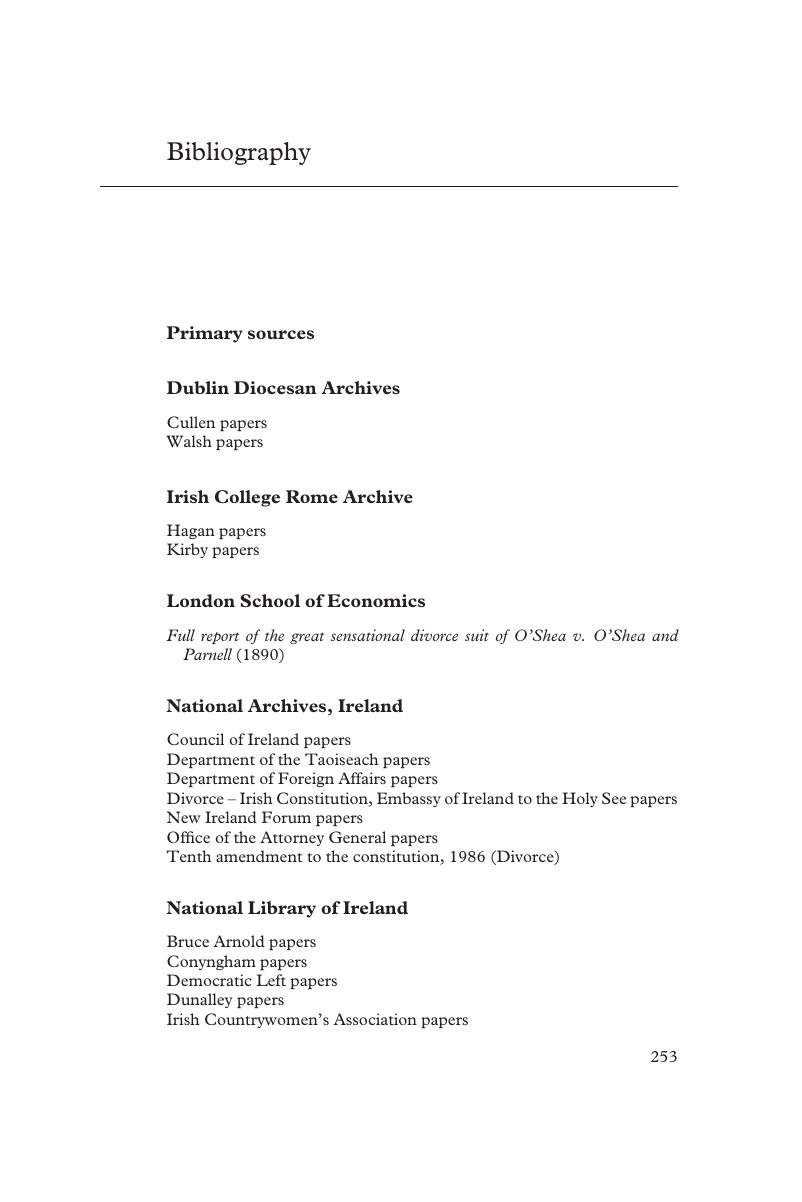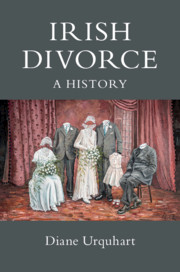Book contents
- Irish Divorce
- Irish Divorce
- Copyright page
- Dedication
- Contents
- Figures
- Acknowledgements
- Introduction: The ‘Anatomy of a Divorce’
- 1 Divorce in Two Legislatures: Irish Divorce, 1701–1857
- 2 The Failings of the Law: The Cases of Talbot and Westmeath
- 3 A Non-Inclusive Reform: Ireland and the Divorce and Matrimonial Causes Act of 1857
- 4 Divorce in the Post-Reform Era of 1857–1922: ‘Like Diamonds, Gambling, and Picture-Fancying, a Luxury of the Rich’
- 5 The Widening Definition of Marital Cruelty
- 6 Divorce in Court, 1857–1922
- 7 ‘An Exotic in Very Ungenial Soil’: Divorce in the Northern Ireland Parliament, 1921–1939
- 8 With as ‘Little Provocation as Possible’: The Northern Ireland Move to Court
- 9 An ‘Unhappy Affair’: Divorce in Independent Ireland, 1922–1950
- 10 Marriage Law ‘in This Country Is an Absolute Shambles’: The Reform Agenda
- 11 A ‘Curiosity [and] … an Oddity’: Referenda in 1986 and 1995
- 12 The ‘Last Stretch of a Long Road’: The Family (Divorce) Law Act of 1996
- Conclusion
- Bibliography
- Index
- References
Bibliography
Published online by Cambridge University Press: 16 January 2020
- Irish Divorce
- Irish Divorce
- Copyright page
- Dedication
- Contents
- Figures
- Acknowledgements
- Introduction: The ‘Anatomy of a Divorce’
- 1 Divorce in Two Legislatures: Irish Divorce, 1701–1857
- 2 The Failings of the Law: The Cases of Talbot and Westmeath
- 3 A Non-Inclusive Reform: Ireland and the Divorce and Matrimonial Causes Act of 1857
- 4 Divorce in the Post-Reform Era of 1857–1922: ‘Like Diamonds, Gambling, and Picture-Fancying, a Luxury of the Rich’
- 5 The Widening Definition of Marital Cruelty
- 6 Divorce in Court, 1857–1922
- 7 ‘An Exotic in Very Ungenial Soil’: Divorce in the Northern Ireland Parliament, 1921–1939
- 8 With as ‘Little Provocation as Possible’: The Northern Ireland Move to Court
- 9 An ‘Unhappy Affair’: Divorce in Independent Ireland, 1922–1950
- 10 Marriage Law ‘in This Country Is an Absolute Shambles’: The Reform Agenda
- 11 A ‘Curiosity [and] … an Oddity’: Referenda in 1986 and 1995
- 12 The ‘Last Stretch of a Long Road’: The Family (Divorce) Law Act of 1996
- Conclusion
- Bibliography
- Index
- References
Summary

- Type
- Chapter
- Information
- Irish DivorceA History, pp. 253 - 271Publisher: Cambridge University PressPrint publication year: 2020



